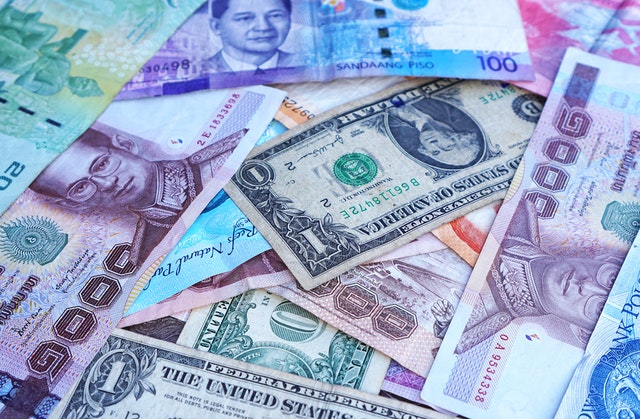Emerging Markets: Currency Depreciation & Pricing Strategy
 PriceBeam
·
3 minute read
PriceBeam
·
3 minute read

In their effort to continuously grow and expand their business, Western companies are targeting emerging markets and the growing middle class segment -- so far this year, investors have poured more than $30bn into emerging markets equity, and an equal amount has been invested in emerging markets bonds.
You got the BRICS, the MINTs, the N-11, the CIVETS, and plenty more. The numerous acronyms reflect how economists cannot come to an agreement on which countries have the most potential and which ones are able to sustain their rapid growth. However, it remains that the potential is massive.
To seize this opportunity, companies must be willing to incur certain risks. More volatility, uncertainty, complexity, and ambiguity. In this article, we will look at one of the most pressing issues for multinational companies operating in emerging markets. In fact, 88.3% of companies agree this is the single biggest challenge; currency volatility.
In recent years, there has been a clear trend in emerging markets; the currency kept depreciating, eroding profits for multinational companies whose earnings are in home currency, e.g. USD or GBP. So when China’s central bank decides to devalue the Yuan to maintain its leading export position, the multinational companies are left with two options; either they can swallow the loses and maintain their market share, or they can increase prices.
However, most multinational companies are not equipped to address this volatility with their pricing strategy, and they often end up completely disregarding what they consider the single biggest challenge -- at least when it comes to their pricing strategy. Research from Harvard Business School shows that, on average, 50% of multinational companies operating in emerging markets will change their price no more than once per year; 27% change it semi-annually, and only 17% make price changes on a quarterly basis. Not only is this a problem in itself, but it also shows evidence for one of the main reasons multinational companies are unfit to deal with currency volatility.
Reason #1: Rigid Pricing Structures
In all fairness, this is something most companies struggle with, not just those operating in emerging markets. Rigid pricing structures such as high costs related to menu costs (i.e. the price of changing price tags); price information (i.e. the cost of determining what the price should be); and a fear of imminent consumer reactions (mainly due to poor price information).
In reality, what happens is that companies realize that currency fluctuations are eating their profit margin; they know they should do something, but unless this fluctuation is substantial, it is too costly in terms of money and effort to address it. Therefore, it is important for such companies to make clear procedures for dealing with currency fluctuations, and to improve internal procedures so they’re sufficiently agile.
Reason #2: Pricing Decisions Made by the Wrong People
The local managers see it with their own eyes; currency depreciation is eroding profits. Yet, it’s the guys at the home office who are responsible for pricing decisions. That’s plain wrong.
The typical excuse that these companies keep telling themselves is that centralizing pricing decisions is good for the ‘consistency’ in prices. Newsflash: Prices are not meant to be consistent! Well, at least pocket prices aren’t. The willingness to pay for a given product is obviously very different in the US compared to Vietnam, and while list prices should be kept somewhat consistent to avoid parallel import and decrease key account risk, the pocket prices should not.
Moreover, it’s important to remember that local companies in emerging markets are not affected by currency volatility, and so, a price increase may not always be optimal; even if it appears so at the New York HQ. Instead, if the currency depreciation seems lasting, it may be better to reduce input costs in collaboration with the people from product development. Of course, these people are rarely consulted either.
There is no way around it; let local reps determine prices, with some overall organizational guidelines, and check out if it’s possible to reduce input costs rather than increasing prices. Note, however, that we’re not advocating that you focus on cost-minimization in general; we’re merely suggesting that if you already have set the right, value-based price, and the local currency is then depreciated, well, then increasing the price will lead to a suboptimal outcome.
Reason #3: Salespeople Incentivized On Revenue
This is not just the emerging markets companies, as we have mentioned in several articles before. But it’s also a problem here. Especially when profits are eroded by currency fluctuations, and the salespeople don’t have any reason to care, because their bonus is determined by revenue and not profit. Your pricing strategy won’t really matter if, at the end of the day, it’s completely disregarded by salespeople due to suboptimal incentives.
Using Home Currency is NOT the Solution
After reading this article you may be tempted to think: “What if I invoice my customers in my home currency? Surely, they won’t mind paying in USD or GBP?” You may be able to get away with it in developed countries, but in emerging markets this is a very bad idea. There will inevitably be customers who won’t be able to meet this criterion, alongside a bunch of customers who don’t want to. Finally, doing so will make you lose control; while it may be tempting to have one less important decision to tend to, it is essentially in your own interest to remain in control.
.png?width=400&height=100&name=PBLogoTransparent%20(1).png)




